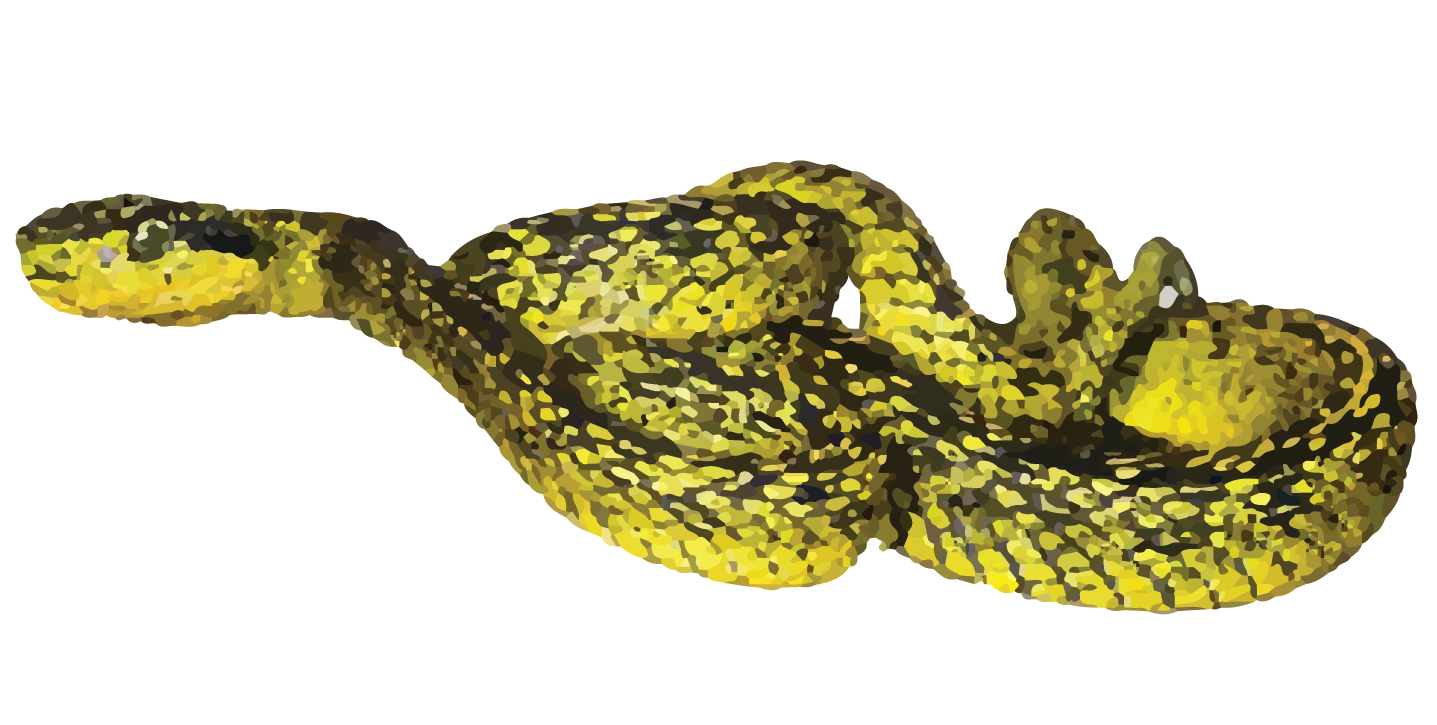Yellow speckled Pit Viper

- Habitat: Montane forests and cloud forests
- Distribution: Found in Central America, including countries like Costa Rica and Panama
- Diet: Small mammals, birds, lizards, and frogs
- Size: Typically 1.5-2 feet in length
Physical Description:
- Appearance: The Yellow-speckled Pit Viper typically has a stout body with a triangular-shaped head distinct from the neck. Its coloration varies, usually ranging from green to brown, with yellow or light-colored speckles or spots scattered along the body. Some individuals may exhibit variations in coloration.
- Size: Adults generally range from 50 to 90 cm (20 to 35 inches) in length.
- Head: The head is large and triangular, equipped with prominent heat-sensing pits located between the eyes and nostrils.
- Tail: The tail is relatively short and tapers gradually towards the tip.
Conservation:
- Status: The conservation status of the Yellow-speckled Pit Viper is not extensively documented, but like many snake species, it faces threats from habitat loss, fragmentation, and human activities.
- Protection: Conservation efforts should focus on preserving its forest habitats and minimizing disturbances to these ecosystems, including deforestation and agricultural expansion.
Importance:
- Ecological Role: As a predator, the Yellow-speckled Pit Viper helps regulate populations of small vertebrates, contributing to the balance of its forest ecosystem.
- Human Interaction: While its venom is potent and can cause significant local pain and tissue damage, bites to humans are relatively rare. Individuals should exercise caution and avoid provoking these snakes in their natural habitats.
